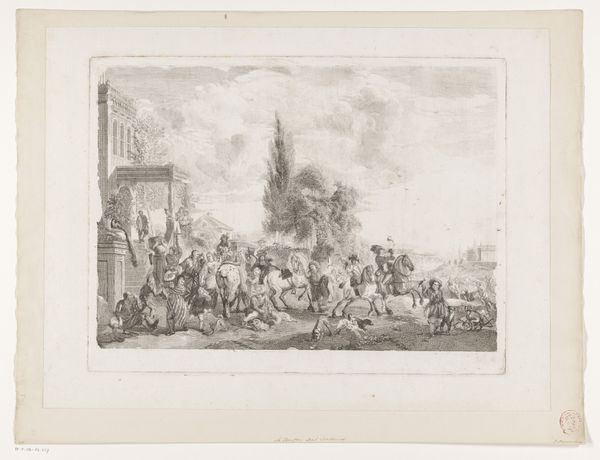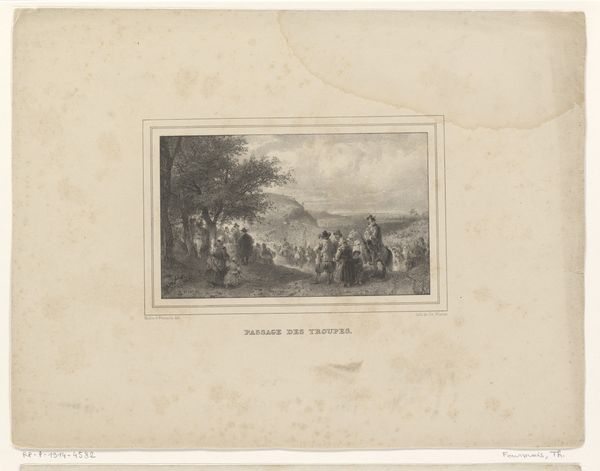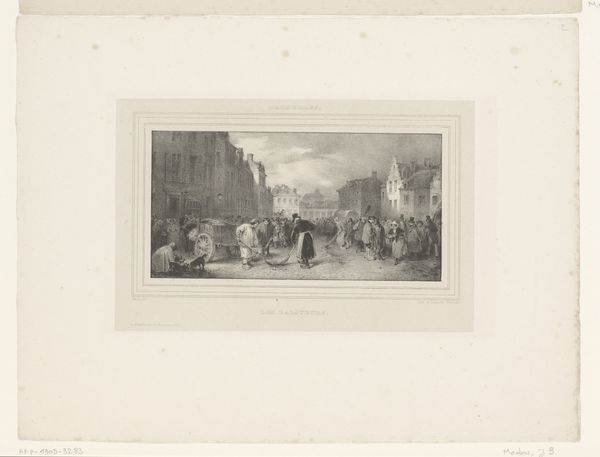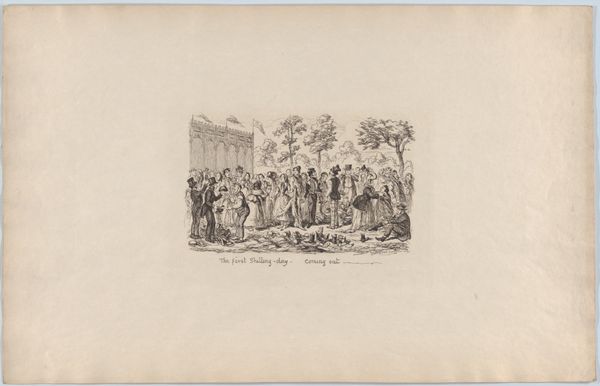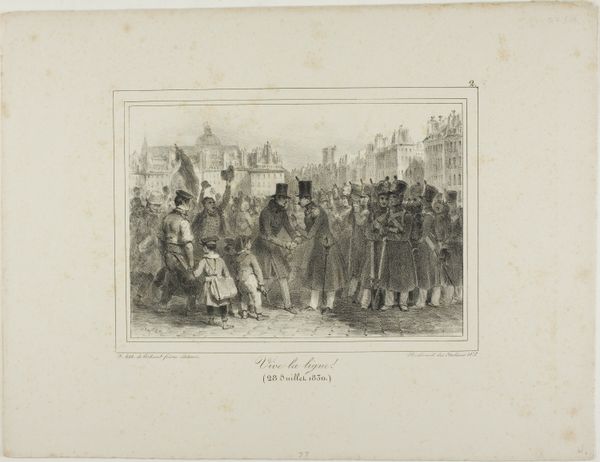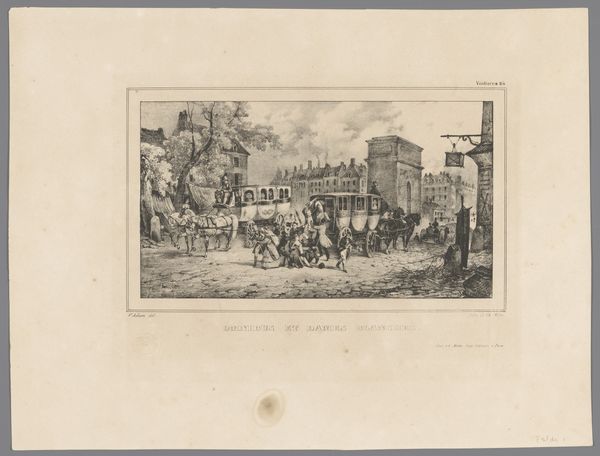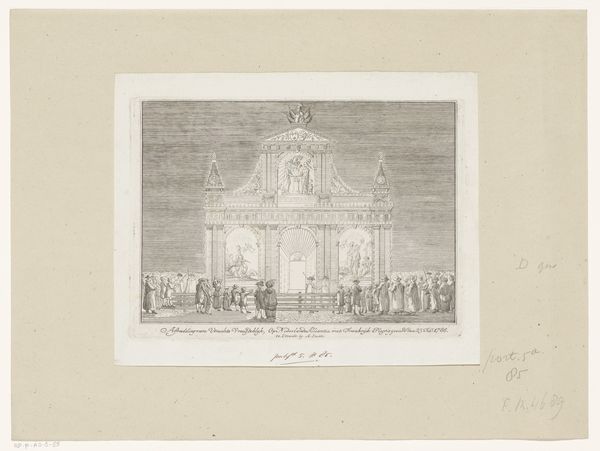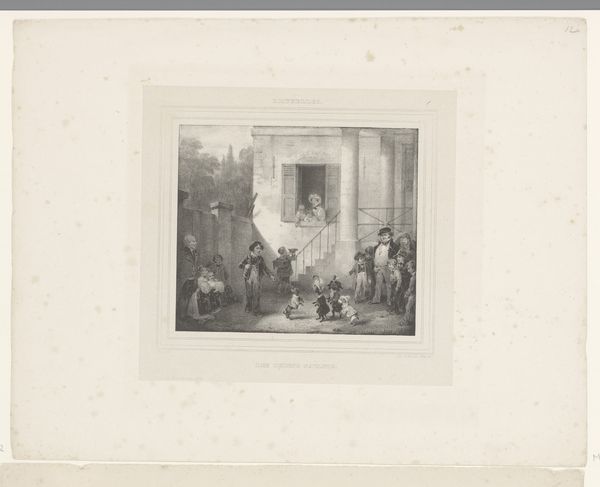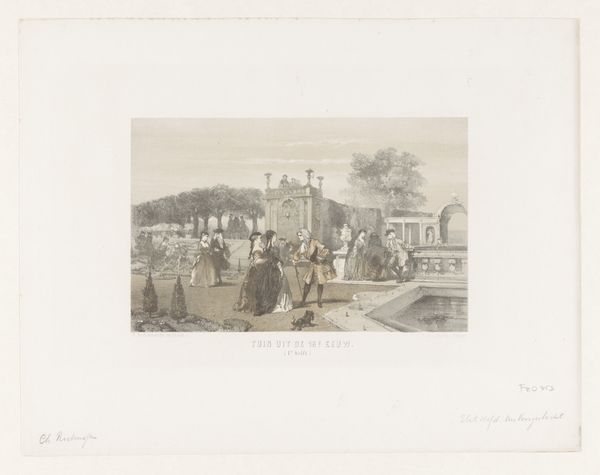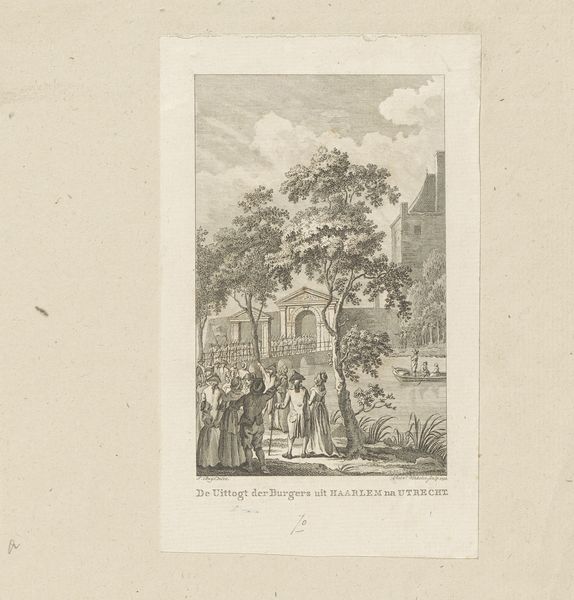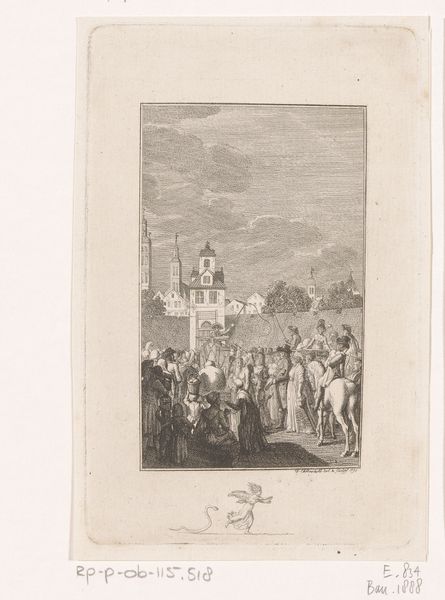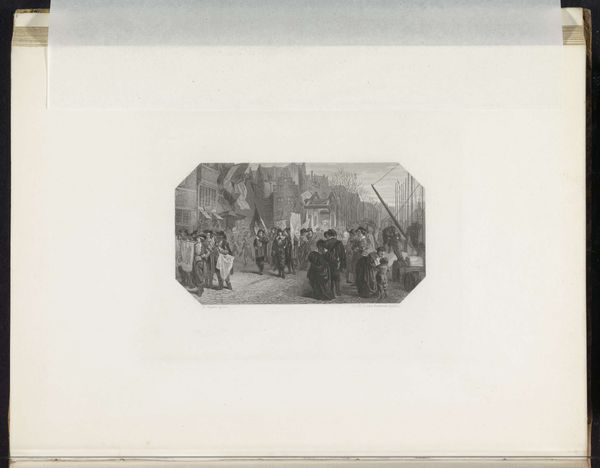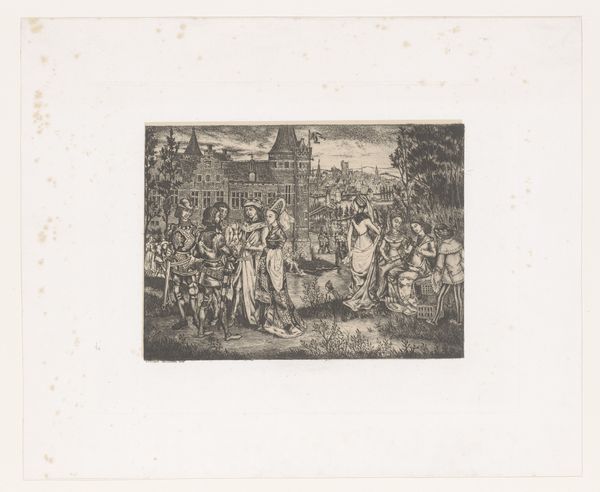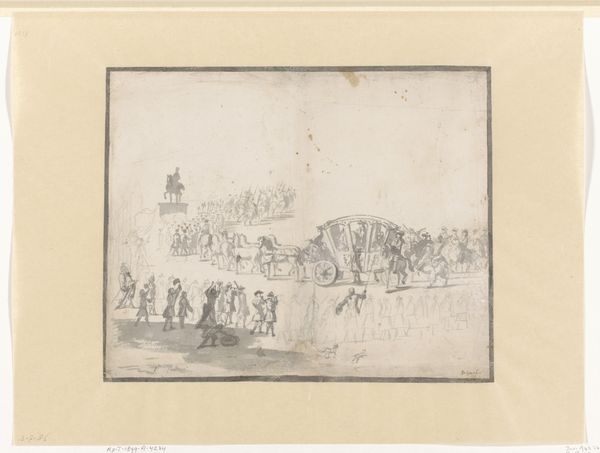
print, etching
comic strip sketch
aged paper
light pencil work
etching
pencil sketch
light coloured
old engraving style
landscape
etching
personal sketchbook
romanticism
sketchbook drawing
pencil work
genre-painting
Dimensions: height 60 mm, width 86 mm
Copyright: Rijks Museum: Open Domain
Curator: Here we have Daniel Nikolaus Chodowiecki’s etching, “Coach arriving at the village square,” created in 1794. What are your initial impressions? Editor: It feels so contained, doesn't it? Almost like a theatrical stage. All of the lines, the composition—it's so orderly. The tonal scale is subdued, too. Very quiet overall. Curator: Yes, there's a definite sense of stillness. What interests me is how Chodowiecki utilizes symbols of transition and hierarchy. Note the prominent church steeple. This draws attention away from the secular arrival, instead making a pointed reference to moral codes. Editor: I also see how the parasol, held aloft, almost mirrors that steeple. Isn't it a visual representation of wealth and privilege? A statement about those who are shielded from the harsh realities faced by others in the square. Curator: Exactly. And consider the positioning of the figures. The villagers on the right seem to be a crowd awaiting their betters as they approach the village on horseback. Note the way the people stand together. He establishes social status and tension within a confined space. The lines emphasize this rigidity. Editor: And yet, there’s a slight air of expectation, even excitement in the gathering. Those children looking on suggest an openness. Is it maybe about the anticipation that accompanies new arrivals and the potential changes that may come? Curator: That's an astute point. While the image may seem straightforward in its representation of class disparity, these minute details of emotional potential complicate this further. Consider, as well, the light. Despite the stillness, there's an airy lightness that creates a softening effect. This light gives depth to what could otherwise appear very simple. Editor: Well, seeing that simple scene now— I see it far more critically as a potent symbol for societal observation of status and community relationships! Curator: Indeed. By dissecting the individual parts, it gives us a comprehensive glimpse into the intricate balance that forms society’s collective portrait.
Comments
No comments
Be the first to comment and join the conversation on the ultimate creative platform.
